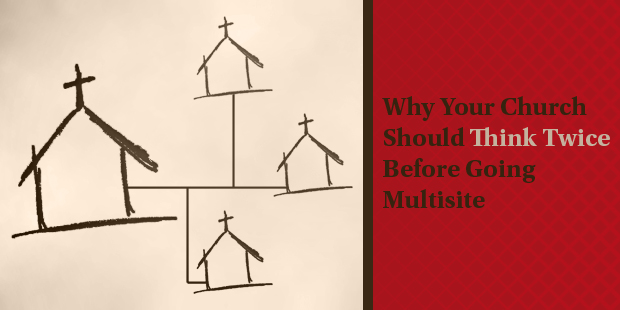
What Church Leaders Must Know About Going Multi-Site
For churches with plans to go multi-site, navigating what should be unique about each campus and what needs to be consistent can be tricky. Because no matter the number of campuses your church has or plans to have, multiplication is the goal – multiplying believers, ministries, groups and churches.
So if you are considering going multi-site, it’s important to stay focused on multiplying the mission of God – and not just your brand of church or the reach of one person.
So how can churches successfully expand their reach?
Strategy.
This is what is at the heart of planning for multi-site success: If you don’t have a plan, multi-site won’t work. Churches who experience rapid growth – and who maintain that growth – place a premium on intentional and strategic leadership. And strategic leaders understand that what they do has eternal significance. Church leaders have been entrusted with the spiritual care of many and to steward that carefully, they must consider strategy an important facet of their pastoral responsibility.
Leadership Development.
Multi-site ministry is about multiplying the reach of one church; it’s about one church meeting in different locations. If multiplication is the goal, then church leaders should keep developing new leaders at the center of what they do. That’s not just staff leadership but volunteer leadership, too.
Central Services.
This is one of the strongest arguments for multi-site campus development: The ability to share leadership and resources is the best stewardship decision churches can make.
And with your three key ingredients for a successful venture into multi-site now identified and defined, you’ll need to consider your church’s financial health and the ‘stories’ your numbers tell you in an effort to make your multi-site campus become self-sufficient in the shortest time possible.
Because starting a new campus is tough. Sustaining an existing campus is even tougher. But nothing compares to trying to keep a campus afloat when it becomes a big drain on the operational budget. It can really erode the excitement around your multi-site ministry.
Excitement can very quickly evolve into fear and worry as you infuse more money into your expansion campuses than you may have anticipated or budgeted, causing it to become an enormous cash burden.
So you should (and can!) understand the financial needs of what it will take to have a successful multi-site ministry before you make the leap. Here are a few tips to help your multi-site campus become self-sufficient as quickly as possible:
Buy nothing!
Buildings are short-term solutions with long-term consequences. Figure out the balance between what you need and what you need right now. The building you can afford to buy now will be too small in a few years, and you won’t be able to get the majority of that money back.
Find existing spaces that don’t need a lot of work.
These spaces typically have a good number of resources available such as seating, a stage, lighting, and audio/visual equipment in the auditorium. Not only can this offer incredible savings, but it puts you directly in touch with the families in the community.
Don’t just rent space from them – invest in them. Engage the parents in painting projects at the school, putting coats on needy kids, and making sure that hungry children are fed at lunch.
Once the campus has reached its full growth potential in attendance and giving, you can start to look at the next steps.
Meet in another church or rent a ‘timeshare’ space.
This is a great option that few churches consider. There are so many churches out there that hold only one service. Let them do their service at nine, and pay them for letting you do your service at 11.
Lease improvements/retrofits and purchasing are two very expensive options. Renting a ‘timeshare’ space can save your campus a ton of money, and help your campus get to self-sufficiency faster.
Include your campus pastor in all of the financial conversations.
Your campus pastor is the one who’s going to be building relationships with your new church members. Therefore, they will be primarily responsible for cultivating generosity at your new location. Sit down with your campus pastor, and talk about the financial plan along with a cost structure. Set goals. Follow up on them.
Grow towards your people.
A campus is an extension of your existing church, which is what makes it different than a plant or a satellite church. Use the Church Community Builder Donor Analysis Report to see where the largest – or fewest – number of your giving units drive from to attend church. If there are a decent number of people who are driving more than 15–20 minutes to attend your church from a certain area, you should have a very good idea of where your next campus should be.
You shouldn’t launch a new campus until you know how you plan to become financially stable and how long it will take you get there. That doesn’t mean there won’t be unexpected surprises along the way. It just means everything won’t be a surprise and you will be able to move forward with an even greater sense of confidence, knowing you’ll be able to sustain what you started.
The quicker your campus moves from startup to self-sufficient, the sooner you can begin planning your next launch.
> Read more from Church Community Builder.















